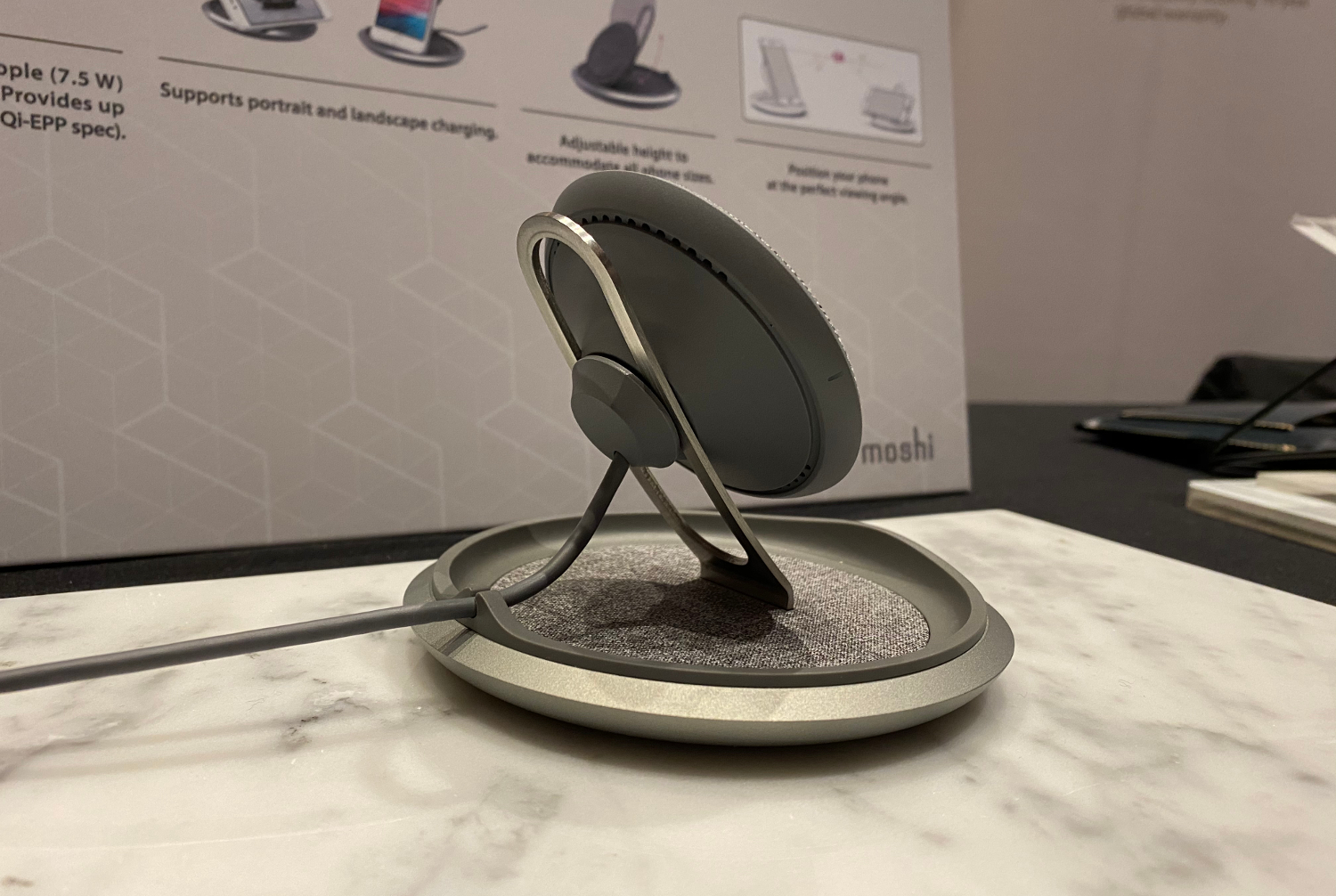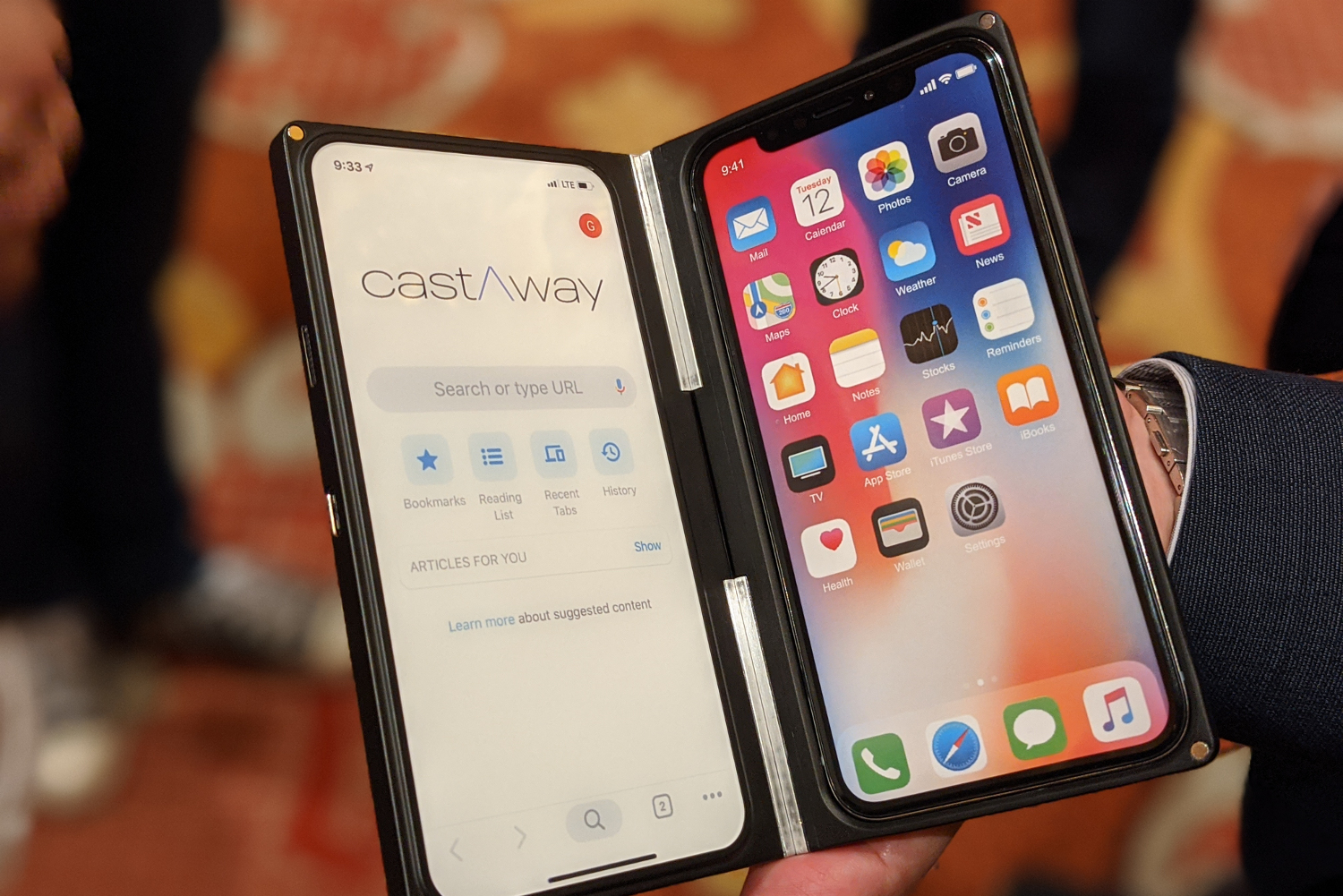This story is part of our continuing coverage of CES 2020, including tech and gadgets from the showroom floor.
As we pounded the halls of CES 2020 in Las Vegas we uncovered a stunning array of new phone cases, wireless chargers, portable battery packs, and other tempting mobile accessories. Here are our picks of the most innovative or interesting mobile accessories on show in Vegas this year.

Incipio Organicore Cases
This new range of eco-friendly cases for the iPhone 11, 11 Pro, and 11 Pro Max are made from 100% compostable material from plants. Incipio’s proprietary Organicore material isn’t just environmentally conscious, it’s also highly protective, safeguarding your iPhone from falls of up to 6 feet. The cases are slim and lightweight with a raised bezel to protect the screen and they won’t interfere with wireless charging. The cases take just six months to break down in industrial compost facilities and they come in recyclable packaging with eco-friendly ink. Available in four different neutral colors, Incipio’s new cases cost $40 apiece.
Targus Backpack with Wireless Charging Pocket
With eco-friendly credentials and a thoughtful design the new Targus Cypress+ Ecosmart backpack with wireless charging could be your ideal daily companion. It has an understated look, it’s lightweight, and it’s constructed entirely from recycled water bottles. The highlight feature is the wireless charging pocket which contains a protective cradle for your smartphone and plugs into an included, 5,000mAh battery pack in the back, which is enough to fully charge most phones twice. It works with any phone that supports Qi wireless charging, like the iPhone 11 Pro or Samsung Galaxy Note 10 Plus. A section on the outside of the pocket lights up blue when it’s charging and turns red if there’s a problem. You can also unplug the battery pack to recharge it, or switch in a larger capacity power bank if you need more juice.
Clever features like a trolley strap, suspended straps for a greater range of movement, and a mesh back with vents to keep your back cool round out a compelling package. It’s set to arrive in June or July, and it will cost you $180. There’s also the Mobile VIP+ Backpack for an extra $20 which adds things like an RFID blocking pocket, waterproofing, and sports a slightly different look. It will be available in March.
Moshi Lounge Q Wireless Charger
The newest version of Moshi’s wireless charger range is the Lounge Q and it features a clever adjustable design so that you can prop your phone in landscape or portrait view and shift the charging pad up and down as necessary. The gray fabric is inspired by Danish furniture and fits in beautifully in most modern homes. A silicone ring adds a visual highlight but also provides important grip to keep your phone in place. It can deliver up to 15W of power, so is capable of charging most phones at top speed.
This offering is going to be quite expensive, at around $70, when it launches in April, at least compared to other wireless chargers, but Moshi’s use of quality components and its design nous justify the extra outlay. It’s also covered by Moshi’s 10-year warranty, which provides some peace of mind and is a rarity for mobile accessories.
Ampere Wireless Charger
The makers of Unravel, the clever hinged trio of wireless charging pads, are back this year at CES with a new device. Ampere has developed a 13,400mAh battery pack called Full Circle that can be wirelessly charged itself and also acts as a wireless charging pad for your phone. It can charge at up to 15W and outputs up to 10W, which is enough to wirelessly charge most phones at top speed. It’s also angled to double up as a stand for your phone and it has a USB-A and a USB-C port to charge via cable.
Ampere is also offering a special fanny pack called the Side Pocket that you can slide the Full Circle into. It has a pouch inside to securely hold your phone and it will wirelessly charge while it’s in there. The fanny pack is also waterproof and there’s a window with a light to indicate that your phone is charging. The bundle costs $120.
Sima Robot
This cute robot body can accommodate any smartphone between 4.5 and 5.5 inches and the companion app transforms it into an interactive robot that can walk, dance, talk, and play educational games. Developed in Chile, the robot has IBM Watson inside and connects via Wi-Fi and Bluetooth. It can respond to commands and comes loaded with various educational activities aimed at young children that help them learn about animals, numbers, shapes, and more. There’s also the facility to create your own educational games and the makers are working on a version for larger phones. It will cost around $200 when it goes on sale in the U.S. later this year.
Pictar Smart Stick
Starting out making innovative camera grip attachments for smartphones, Pictar was well-placed to reinvent the selfie stick and it has done an impressive job. The Pictar Smart Stick features a thoughtful design, giving you a six-button control panel that allows you to tilt the phone’s angle, zoom in or out, adjust the brightness, switch between cameras, and shoot pictures or video. It uses a clever ultrasonic system, rather than Bluetooth, to communicate with your phone and there’s a companion app with all sorts of photography tools.
The Pictar Smart Stick also has a grip handle, tripod socket, and a rechargeable battery you can plug in via Micro USB. Optional lens and light attachments round out the most complete selfie stick on the market. It costs $70.
CastAway Case with Second Screen
Folding phones are set to take off this year and we saw a new concept from TCL at CES 2020, but they’re going to be expensive and a lot of software has to be redesigned to enable you to take full advantage. One alternative is to get a second screen for your phone in the shape of a case and that’s exactly what CastAway offers.
The second screen in this case is essentially a Chromebook and it can hook up to an iPhone or Android smartphone, with a companion app enabling you to share content between the two. The case itself has a magnetic hinge, so you can set up a movie on the second screen and then hand it to your kid in the backseat of the car, for example. We checked out a prototype version, so there are still some kinks to figure out here, but the project is progressing since its highly successful Indiegogo campaign. It will cost you around $200 and they’re hoping to ship in May.
Follow our live blog for more CES news and announcements.






















